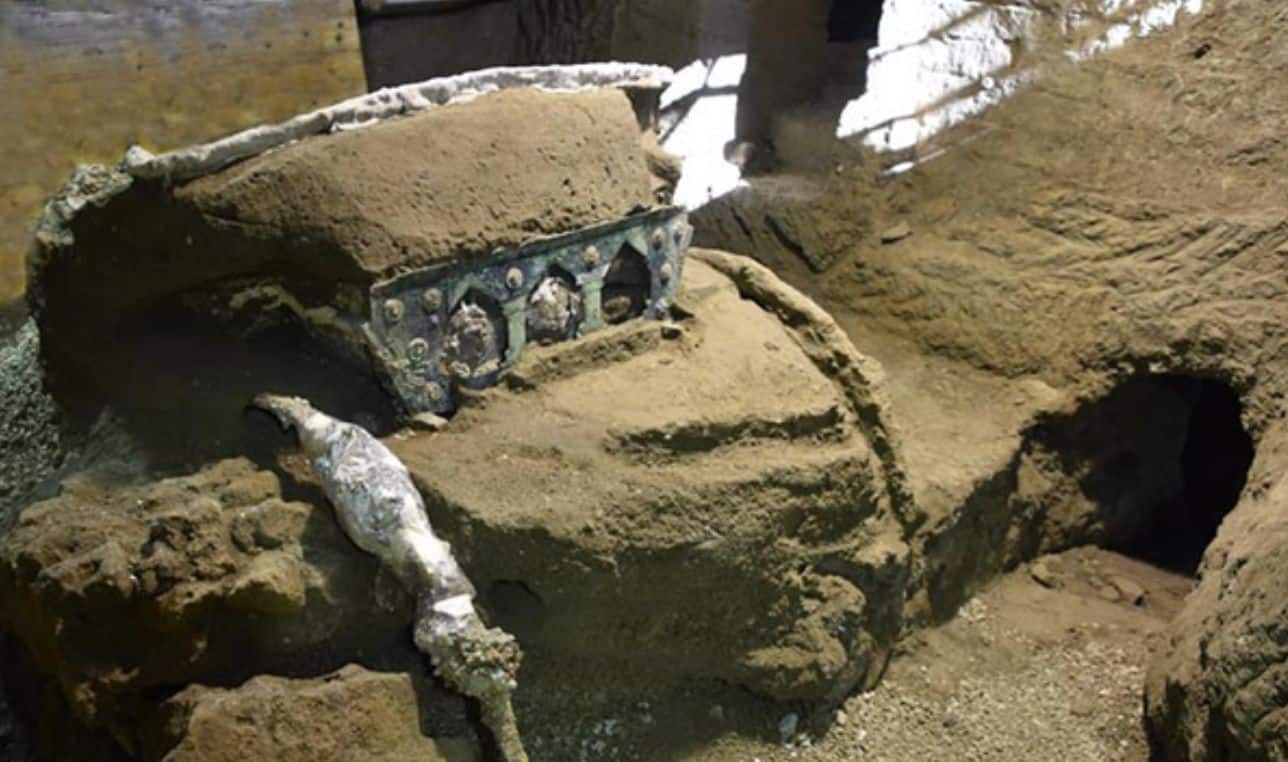A large four-wheeled ceremonial float, with iron elements, bronze and tin decorations, remains of mineralized wood, and traces of organic elements, such as ropes, has been found almost intact in the archaeological area of Pompeii (southern Italy), the city buried in 79 AD by the eruption of Vesuvius.
The discovery, of enormous value for the knowledge of the ancient world, occurred in the suburban village in Civita Giuliana, north of Pompeii, beyond the walls of the ancient city, reported this Saturday by the Pompeii Archaeological Park and the Prosecutor’s Office from Torre Annunziata, who are working together on this project also aimed at combating clandestine looting.
- Scientists in Fear of This New Predator From Red Sea Eating Native Species in Mediterranean
- Does This Mean We Stopped Being Animal and Started Being Human Due to ‘Copy Paste’ Errors?
- The One Lifestyle Choice That Could Reduce Your Heart Disease Risk By More Than 22%
- Aging: This Is What Happens Inside Your Body Right After Exercise
- Immune-Boosting Drink that Mimics Fasting to Reduce Fat – Scientists ‘Were Surprised’ By New Findings
The carriage was found “in excellent condition” in the portico of the villa, in front of the stable where the remains of 3 equidae had already emerged in 2018, including a harnessed horse and preserves its iron elements, the beautiful bronze and tin decorations, the remains of mineralized wood, the traces of organic elements.
“It is an extraordinary discovery for the advancement of knowledge of the ancient world”, according to Massimo Osanna, outgoing director of the Archaeological Park, who stressed that “At Pompeii vehicles used for transport have been found in the past, such as that of the House of Menander, or the two chariots discovered at Villa Arianna (one of which can be admired at the new Stabian Antiquarium), but nothing like the Civita Giuliana chariot.”
It is “a ceremonial chariot, probably the Pilentum referred to by some sources, which was employed not for everyday use or for agricultural transport, but to accompany community festivities, parades and processions. This type of chariot, which has never before emerged from Italian soil, bears comparison with finds uncovered around fifteen years ago inside a burial mound in Thrace (in northern Greece, near the Bulgarian border). One of the Thracian chariots is particularly similar to ours, even if it lacks the extraordinary figurative decorations that accompany the Pompeian find.”
The Minister of Culture Dario Franceschini stressed that the collaboration of different departments “prevented the theft and illegal commercialization of such extraordinary finds.”
For his part, the chief prosecutor of Torre Annunziata, Nunzio Fragliasso, assured that “the fight against the looting of archaeological sites, inside and outside the urban area of ancient Pompeii, is undoubtedly one of his priority objectives.”
The project aims to “stop the looting of cultural heritage by illegal immigrants who had drilled several tunnels in the area to intercept archaeological treasures”, in addition to “bringing to light and saving from the looting action one of the most significant towns in the area. Vesuvian territory”.
